In the not-so-distant past, simply having a blog was enough to make you stand out from the crowd…and the competition. Regularly putting out content was like wearing a neon orange vest. People took notice.
Unfortunately, so did the marketplace. And today, blogs are as commonplace as the oxford comma. A quick Google search revealing blogs-aplenty about seemingly every topic under the sun.
So, now what?
As marketers it’s our job to be constantly innovating and finding new ways to reach customers. Doing so in today’s oversaturated market requires you to find your niche, the place where you can truly add a value that your competition just can’t – or as W. Chan Kim and Renée Mauborgne put it, you have to swim from the red ocean to the blue ocean.
We recently teamed up with the American Marketing Association Cincinnati Chapter to discuss, how to create competitor crushing content using customer insights. It was such a valuable conversation that it made sense to share theses 3 key steps to successfully differentiating your content.
And guess what? It all starts with the customer. Let's dive in!
It's not about marketing. It's about key intersections on the way to solve a problem.
“If it looks like marketing, acts like marketing, and smells like marketing, it doesn’t work.”
Customers are savvy and (spoiler alert) they don’t want to be sold to.
Before ever talking to a salesperson or really engaging with anyone from your brand, they are doing their own research – digging into blogs, researching topics, looking to learn.
And the “path” that today’s customers take to making a purchasing decision reflects just how intricate of a journey they are really on.
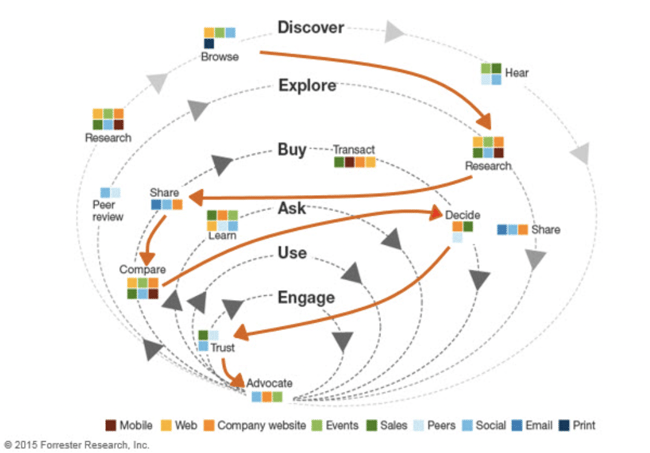
What does this mean for you? The content you are producing must be able to meet every individual on their unique journey. Answering their questions in a thoughtful and meaningful manner.
And maybe most importantly of all, doing so in a way that’s easy to find and comprehend.
Remove the friction
No one likes friction, and if you are asking your audience to dig through a sack of blogs to find the right one, chances are they are going to move on to another competitor who serves up the answer with the speed of a fast-food drive-thru.
But how do you know what your customers care about? What they are searching and questioning on their journey to making a purchase?
While you can always just ask your customers, we’ve developed a three-step process that offers clear customer insight without the burden of calling up a customer every time you have a question about a new blog post.
Discover Where Your Product Overlaps With What Your Customers Care About
In setting out to create your customer centric content program there are two variables you have to keep in mind: topic vs. context.
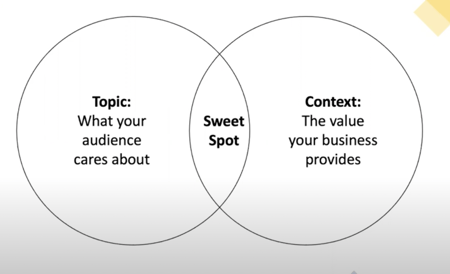
Why does this matter?
- Should you find you only have a good topic, you will end up with loads of traffic and little to no conversions.
- Conversely, should you only have context, you’ll find you end up with little to no traffic. After all, no one likes the person that only talks about themselves.
Your sweet spot is right in the middle. The crossover between content that is contextually relevant to your audience while also topically relevant to your brand.
To find the sweet spot that's unique to you, start with a competitive audit.
The first step to crushing your competition is understanding what they are doing and how they are doing it, and how that relates to your company.
A competitive audit will lay the landscape for where your content can shine by highlighting areas that your competition already has covered.
Tools like SEMrush offer a clear picture of the landscape with insights like:
- What other domains are doing and what keywords they are ranking for
- How many keywords you have in common
- The overarching SEO strategy
- The map of your content online
What these tools offer (that you can’t do on your own) is an objective view of how you stack up against your competition and vice versa.
Additional questions you should be asking as you conduct your audit:
- Why type of content is your competition creating?
- How frequently?
- What stage of the funnel does the content serve?
- What’s their SEO strategy?
- Do they have a strong point of view?
- What does their sales approach look like?
- What is their web traffic makeup?
- Are they leveraging thought leaders?
Next, dig into the topics, words, and phrases of your customers.
Most of you probably don’t have your customer on speed dial. And if you do, that customer probably isn’t going to love being your sole source for insight.
With that in mind, there are a few resources you can access to easily find key customer insight that will guide your content strategy by defining what your customers care about. Let’s break it down:
- Google – The people also ask section is a goldmine for insight. This section will literally show you the exact questions customers are asking about a specific topic.
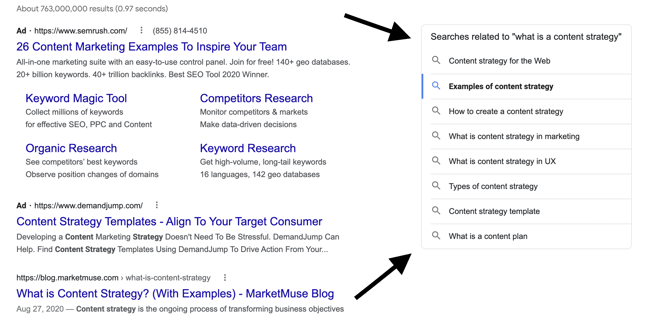
- Facebook groups – Look at the questions people are asking in the comments and the conversations that are being had. If they care enough to post about it, they probably care enough to read a blog or watch a video.
- Clubhouse – Listen to people talk about the industry – the topics that are relevant to them, the words that are being used, the thought leaders being referenced.
- Buzzsumo – This software will show you exactly what trending topics exist for your industry and beyond, and the articles being shared by your future audience.
- Reviews on Amazon – Check out reviews for industry related books and discover a treasure trove of customer insight. What people liked and what left them scratching their head.
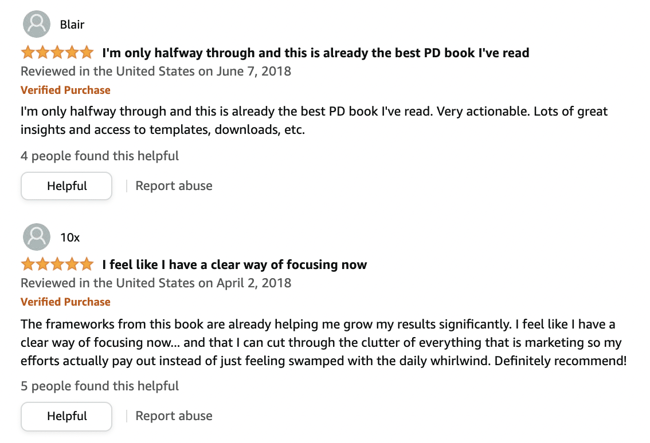
- YouTube Comments – If you don’t already have a channel, check out your competition or other thought leaders in the space to see what people are saying on their videos. And then take those comments and run with them.
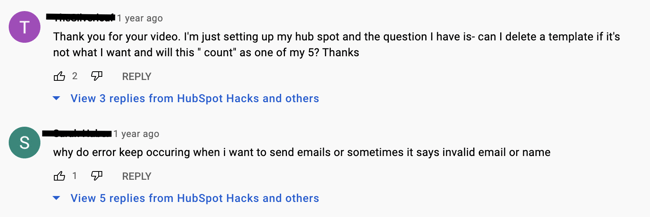
Mixing and matching insight from these sources will help you create a 360-degree understanding of your customers – how they speak, what they speak about, and what they are interested in learning.
Which in turn allows you to have a much more informed conversation through your content pieces.
Plus: Google and YouTube want to rank pages that best fit both the search term as well as the intent. By understanding what your customers are searching for, and the intent behind their searches, you increase your chances of appearing on that coveted first page.
Finally, make sure your content is actionable!
Now’s the time to put your insights into action -- Calls to action that is!
Two rules of thumbs to live by:
- Every page must have a purpose
- You must ask for the “sale”
All too often, organizations create amazing content that truly delivers value and then…nothing. They don’t have a next step for their audience to follow.
Which means that captive audience that was so enthralled with their work is now moving on to the next video, possibly one from the competition.
Calls to action should not interrupt. They should be logical next steps.
Contextually relevant CTAs are logical next steps that don’t feel like a sales pitch, but still work to move your audience along in their purchasing decision. And they are your key to growing your audience’s interest in you and eventually your product.

You actually saw a contextually relevant CTA at the beginning of this blog, but to show you another example we pulled a CTA from one of our recent video marketing blogs. The blog discussed the step-by-step process for video content, so it only makes sense that the reader would be interested in downloading a guide about using video to convert leads into customers.
It works so well because it's relevant to the reader AND it moves them along in their purchasing decision.
Going Beyond What's Expected
They say you shouldn’t reinvent the wheel, but when it comes to content, that line of thinking doesn’t quite live up to expectations.
Content that crushes the competition goes beyond the norm of today’s “5 Things to Know About SEO” and offers audiences practical and actionable takeaways that deliver value to their business and their lives.
And when you do that, your competition doesn’t stand a chance.
Not sure where to start? Discover why creating a content funnel could be your first step toward content success, or learn how to create higher quality content.


